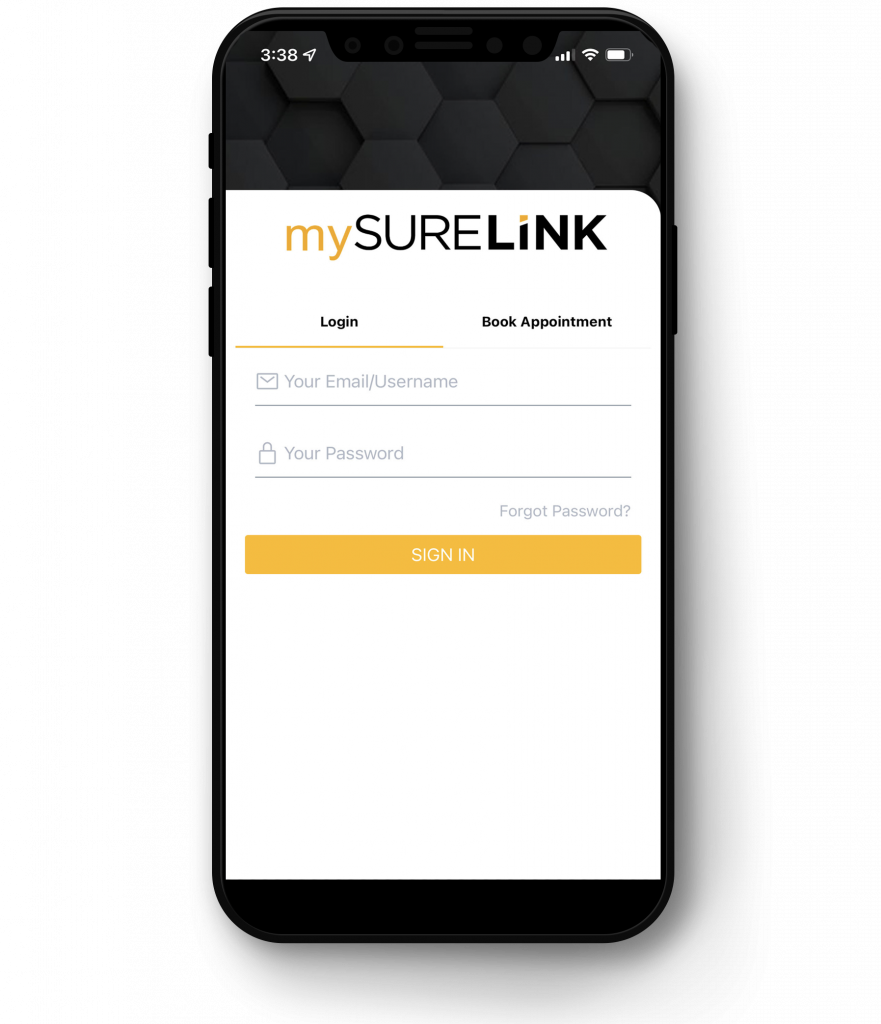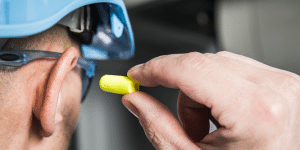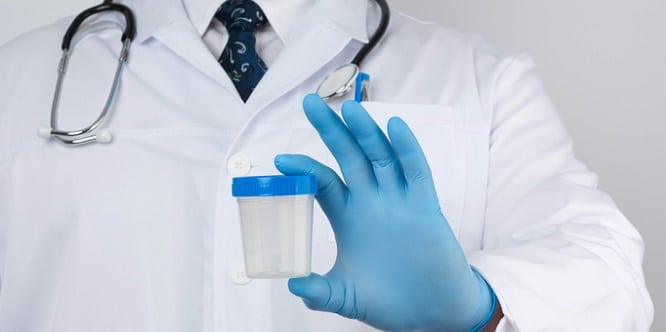TAKEAWAY: Get a quick overview of the benefits of urine drug testing in the workplace, including the substances detected, windows of detection, and more.
Table of contents

Book Urine Drug Testing with SureHire
SureHire offers a broad range of testing services to employers, including drug and alcohol testing such as urinalysis. Urine-based testing is available through both point of care testing, providing results within minutes, and through Substance Abuse and Mental Health Services Association (SAMHSA) approved lab-based testing, with results commonly available within 2 to 5 days.
Employers can also access additional supports for their employees through SureHire, including access to Substance Abuse Professionals (SAP).
The drug testing regimen you choose as an employer should match your company’s purpose. Certain types of drug testing are best suited to specific situations. For example, hair follicle testing can detect the most extended drug history and works well for follow-up testing. However, urine testing remains the standard for most drug detection because of its accuracy, convenience, and the wide range of drugs it can detect. In fact, urinalysis, or urine testing, is the most common type of drug test administered by employers in Canada and the only method of drug testing currently allowed under Department of Transportation (DOT) regulations in the United States.
Benefits of Urine Testing
Employers can leverage urine-based testing as either a point of care test or a lab-based test. It’s familiar to both employers and workers and has a proven track record that can help elicit trust in the drug testing process, making it a dependable and accurate option. Employers can utilize urinalysis for various testing reasons, including pre-employment testing, random testing, post-incident testing, reasonable suspicion testing, follow-up testing, and return-to-duty testing. It can detect a wide variety of drugs used within the previous 4 to 72 hours and is relatively inexpensive to implement, particularly if the employer uses point of care or express testing for the initial screening.
The most common concern with urine-based testing is the potential for adulteration or substitution. However, there are safeguards available to mitigate these risks. Despite concerns, both adulteration and substitution are considered rare events.
How Urine Drug Testing is Conducted
Urinalysis involves the collection of a sample of the employee’s urine in a private setting. Urine is collected in the workplace with a point of care test (POCT) or in a clinic or lab. While observed urinalysis is required in some circumstances, it is extremely rare in Canada. Privacy concerns in Canada far outweigh any concerns about urine adulteration such as substitution or tampering.
With point of care testing, also called express testing, testing takes place immediately on the sample, and the results are usually available within minutes.
If employers elect to send the sample to a lab, results will be available within a few days. The Canadian Model for Providing a Safe Workplace, which provides a non-legislated standard for testing in Canada, suggests that Medical Review Officers (MROs) assess positive test results. The MRO will also interview the worker regarding the positive results and make a determination of the test as negative, negative with safety advisory, refusal to test and why, cancelled with or without further direction, or positive. Negative with safety advisory means that although the worker has legitimate reasons for testing positive for a drug, such as a prescription medication, they may still pose a safety risk to themselves, fellow workers, or the public.
Substances Detected by Urine Testing
Urine drug tests screen urine for the presence of a parent drug or its metabolites, which are the substance produced as the body breaks down or metabolizes a drug. In workplaces, urine testing generally screens for 5 to 10 different substances. These substances can include:
- Amphetamines
- Methamphetamines
- Barbiturates
- Benzodiazepines
- Cocaine
- Cannabis
- MDA-analogues (MDA or MDMA)
- Opioids (codeine, morphine, 6-acetylmorphine [heroin], hydromorphone, hydrocodone, oxymorphone, oxycodone)
- Phencyclidine (PCP) and propoxyphene
- Synthetic cannabinoids (“K2/Spice”)
- Synthetic stimulants
- Alcohol
Urine testing can include a panel combining any of these drugs. However, unless the employer is subject to DOT regulations, the 8-panel drug screening test is the most requested test in Canada and the one recommended by the Canadian Model. The 8-panel drug test screens for the following substances:
- Amphetamine
- Cocaine
- Methamphetamine
- Phencyclidine PCP
- Cannabis/Marijuana
- MDMA
- Opioids
- Oxycodone
Windows of Detection & Urine Testing
The detection window, or window of detection, refers to the specific time frame in which urinalysis can identify the presence of drugs in the system. For most drugs, the window of detection is 2 to 3 days, and a urinalysis may not detect drug use after this period. However, the window of detection is affected by several things, including fat solubility of the substance and frequency of use. [Learn more in “6 Factors That Influence How Long Cannabis Stays in Your System”]. For example, urinalysis can detect both cocaine and cannabis for several weeks in heavy users.
The window of detection for cannabis can vary from 1 to 30 days with a urine test. For other substances, the window of detection is primarily determined by fat solubility:
- Amphetamines – 2 to 4 days
- Methamphetamine – 2 to 5 days
- Barbiturates – Up to 7 days
- Benzodiazepines – Up to 7 days
- Cocaine – 2 to 3 days
- Codeine – 2 to 4 days
- Morphine – 2 to 5 days
- Heroin – 2 to 3 days
- PCP – 5 to 6 days

Get Fast, Accurate Urine Drug Test Results!
Businesses need technology and systems that make their experience seamless, so they can build, strong, healthy, and long-lasting workforces without interruption.
SureLink is an innovative solution that not only allows you to view test results but also access dashboard report snapshots, create live appointment bookings, track participant data, view appointment confirmation history, enrol your workers in online courses, monitor course progress, receive important alerts and notifications, and more!
Our user interface makes navigation simple and with customizable features that allow for adjustments based on your company’s needs.
You May Also Be Interested In…
- Do You Have Reasonable Suspicion?
 Employers cannot initiate reasonable suspicion testing without first going through the 5-step process. Reasonable suspicion training provides critical information about how to initiate reasonable suspicion testing, including the 5-step process and other tools that employers can use to help manage the misuse of alcohol and drugs in the workplace.
Employers cannot initiate reasonable suspicion testing without first going through the 5-step process. Reasonable suspicion training provides critical information about how to initiate reasonable suspicion testing, including the 5-step process and other tools that employers can use to help manage the misuse of alcohol and drugs in the workplace. - An Employer’s Guide: What You and Your Employees Need to Know About DOT Drug & Alcohol Testing
 When implementing or maintaining DOT Drug & Alcohol testing, there are key areas that employers should consider.
When implementing or maintaining DOT Drug & Alcohol testing, there are key areas that employers should consider. - SureHire Occupational Testing Acquires COHR Health: A Positive Step Towards Safe, Healthy, Productive Workforces and Communities
 We are thrilled to announce that today, May 6, 2024, SureHire Occupational Testing has officially acquired COHR Health, a well-known leader in occupational health services. Read on…
We are thrilled to announce that today, May 6, 2024, SureHire Occupational Testing has officially acquired COHR Health, a well-known leader in occupational health services. Read on… - Occupational Testing Use Case – Mining
 In this case study, we will explore how mining companies can use various types of occupational tests to reduce Total Recordable Incident Rates (TRIR) long term.
In this case study, we will explore how mining companies can use various types of occupational tests to reduce Total Recordable Incident Rates (TRIR) long term. - 9 Strategies to Keep Workers Cool on Drilling Sites During Hot Summer Months
 This article delves into strategies to keep workers cool and safe on drilling sites during the hot summer months.
This article delves into strategies to keep workers cool and safe on drilling sites during the hot summer months. - Hearing Conservation Basics: How to Manage Occupational Noise
 Learn how to proactively mitigate occupational noise risks and help prevent NIHL among workers.
Learn how to proactively mitigate occupational noise risks and help prevent NIHL among workers.

